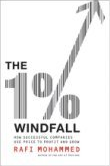Competition...It Can Really Depress Your Prices
Much like dentists experience in their practices, in my line of work, I tend to get called when companies are in pain. Their stories are strikingly similar, with aggressive competitors nipping at their heels, companies are under intense pressure to discount their prices. “How can I keep my margins intact” their frantic Chief Financial Officers inquire. While there are a multitude of strategies that can lessen the pain, the truth is if your competitors are heavily discounting, you better start worrying about your product’s value. Your product’s value is directly related to the price of substitute products.
I once worked with a company whose mantra was “our price is based on the price of the next best alternative.” It was eerie how every salesperson and manager mumbled this mantra whenever pricing was discussed. In each locality, they based their prices on the prices and relative attributes (e.g, higher or lower quality) of their competitors. So it was easy to understand why their product’s price was 20% higher in cities where they faced high priced/low quality competitors compared to other cities with low priced/high quality competitors. This company truly understood value and how to think about its prices.
I think Robert Crandall (American Airlines’ former Chairman and CEO) best summed up the relationship between competition and value. “This industry (airline) is always at the grip of its dumbest competitors” he prophesized. You may have a great product, but if competitors set ridiculously low prices, customers are going to value your product less.
Case in point: the intense rivalry between Jay Gould’s Erie Railroad and Commodore Cornelius Vanderbilt’s Central Railroad in the nineteenth century. These adversaries went head-to-head to control livestock transportation between Buffalo and New York City in 1867. The standard price was $125 per carload. Vanderbilt started the price war by dropping his rate to $100, Gould responded by lowering his price to $75. Vanderbilt retaliated with another $25 discount. And well…you can imagine what happened when two strong willed titans of industry decide to battle it out. The price war culminated with Vanderbilt setting his price at $1 per carload. Jay Gould’s Erie railroad cars ran empty and Vanderbilt celebrated his victory with sold out cars full of mooing cattle. Given that both railroads offered virtually the same price…why would customers pay more to Gould?
Vanderbilt’s merriment abruptly ended when he discovered that Jay Gould had purchased EVERY steer in Buffalo and sent them for slaughter in New York on Vanderbilt’s train cars – yielding fabulous profits for Gould, quite literally at the Commodore’s expense. While an amusing story, it illustrates how little control you have over your own product’s value. If competition gets out of control, like it did in the nineteenth century railroad industry, a profitable business can get wiped out.
Thanks to Maury Klein for sharing this story with me. Please check out Maury’s book “The Life and Legend of Jay Gould.”
Please feel free to send me any questions or comments. I update this blog two to three times a week – please consider signing up to be notified by e-mail of a new blog post. Thanks for taking the time to read my blog.




